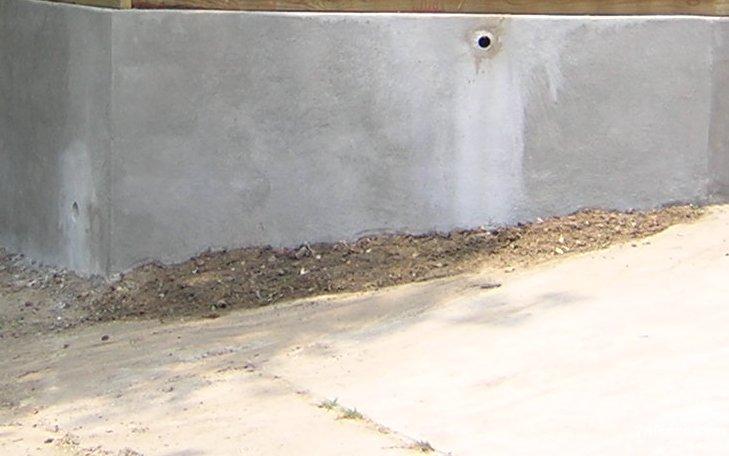Retaining walls hold or retain soil solid behind it. When done correctly, retaining walls are not only functional but can also be aesthetically pleasing to the eyes. They can be made from concrete, interlocking blocks, rocks or boulders and even treated timbers,. Depending on the specifications; some of these can be easy to use, but they all have varying lifespans and all can retain soil. On critical walls holding the soil along a driveway, home or pool a professional engineer should be involved to make sure your solution is designed correctly. In some cities walls over 3’ high need Professional Engineer (PE) design however any wall over 4’ it is usually required.
Before thinking of what your walls should look like; you must first figure out what your walls should be made of and how it should be made based on some important factors. You need to consult a professional design engineer to check these before providing you the specifications to best implement your retaining wall project.
LOCATION
The location of your retaining wall needs to be considered. Depending on it’s size and materials used; it will drastically affect not only the property on which it is built but also the environment around it. Here are some factors to consider about your retaining wall’s location:
Property Lines
Is your retaining wall going to be built along the property boundary? Will the reinforcement system encroach the property line?
Underground Utilities
Will the gas, water, electrical, fiber optic or cable be affected by the process? Texas 811 can/will be called to locate the public utilities to avoid costly issues.
Natural Drainage Patterns
Large sized retaining walls can affect natural drainage patterns. This can have major environmental consequences downstream.
Excess Soil
If you need to cut into the hillside to build your retaining wall; you should have plans on where the excess soil will be stored Or where it will be hauled off to.
Sloping Walls
If you’re building a retaining wall on a slope; where will you store additional infill that must be brought to the site during construction?
Surcharge Load
Will the retaining wall have additional weight above it? These can include driveways, fencing, guardrails, parking lots, and swimming pools. Consider the weight of temporary construction equipment as well.
SOIL
The soil on your property will be the foundation of your retaining wall so it needs to meet the strength required to support the structure. In general, the base soil needs to be firm, solid, and strong enough to support the construction and the built retaining wall. It should not be moist or wet as the soil can expand and contract which will damage the wall.
A geotechnical report should give you information on the soil in your property including its chemical properties, groundwater conditions and more. Your Professional Engineer (PE) design engineer should help you determine your property’s soil type, bearing capacity (how much load it can support), stress parameters, and friction angle (resistance to movement) of the soil foundation for your retaining wall.
DRAINAGE
Water is the most common reason why retaining walls fail; so it is important to make sure that it has good drainage so there will be no water buildup behind the wall. Your Professional Engineer (PE) design engineer can help you inspect the site for drainage patterns and construct a drainage system appropriate to your retaining wall. For larger projects, hydrology analysis should also be conducted.
Will your retaining wall affect the stormwater management, irrigation, etc. and other existing systems in place on the property?
DESIGN
After all the site inspection is done, then your Profession Engineer (PE) design engineer can help you with the design of your retaining wall and other supporting systems. One of the things that need to be done for the design is to calculate the corresponding wall heights, footprint sizes, slopes and the setback angle which depend on the elevation of the site and the soil grade.
One of the considerations for the design is the effect of gravity. Gravity will cause the retained materials to move downslope naturally so your Professional Engineer (PE) design engineer should design the wall in such a way that it counteracts and minimizes this effect.
There are other reinforcement methods available for retaining walls to reduce the effects of gravity. These methods will depend on the wall type, height, design, friction, angle, soil material and many more factors.
Need help with your project? Drop us a line so we can discuss your options.

